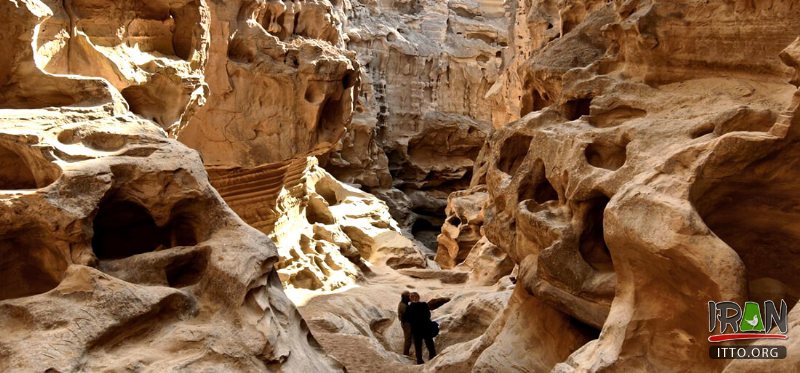You can find one of the world’s most eye-catching nature’s creativities at its finest on
Qeshm Island (in Persian Gulf), southern Iran, where stunning rock formations are a sign of perpetual thumping of the waves, storms and raging winds.
Called Darreh-ye Tandis-ha (“Valley of Statues”), it is a remnant of a high plateau that has been once connected to the “Roof” of
Qeshm. The valley is part of those areas which have been once underneath the water, and when pulled up, it has been heavily eroded by sea waves among other factors.
This type of erosion gets reduced gradually while moving more towards the “Roof” of
Qeshm, which has remained intact.
In some areas of the valley, numerous fossils may be found including fossils of bivalves, in some areas as colonies. Another interesting geological phenomena in the valley is sedimentation forming muddy mud cracks, which has created beautiful and interesting landscapes.
During and after the rainfall, it is important to pay attention to muddy areas where sometimes the mud is very sticky and dangerous to walk on at this geo-site.
Qeshm Island, in the Persian Gulf, is heaven for eco-tourists as it embraces wide-ranging attractions such as the Hara marine forests and about 60 villages dotted mostly across its rocky coastlines. Meanwhile, it is home to birds, reptiles, dolphins, and turtles to name a few.
The island also features geologically eye-catching canyons, hills, caves, and valleys, most of which are protected as part of the UNESCO-tagged
Qeshm Island Geopark, itself a heaven for nature-lovers.
The United Nations Educational, Scientific, and Cultural Organization in 2017 registered the island on its Global Geoparks list.
Such scenic landscapes can also be found in other parts of Iran, for instance in Shahdad, which is a major part of the UNESCO-registered Lut desert in southeastern
Kerman province. Shahdad is home to massive sand pyramids created by wind and water.



